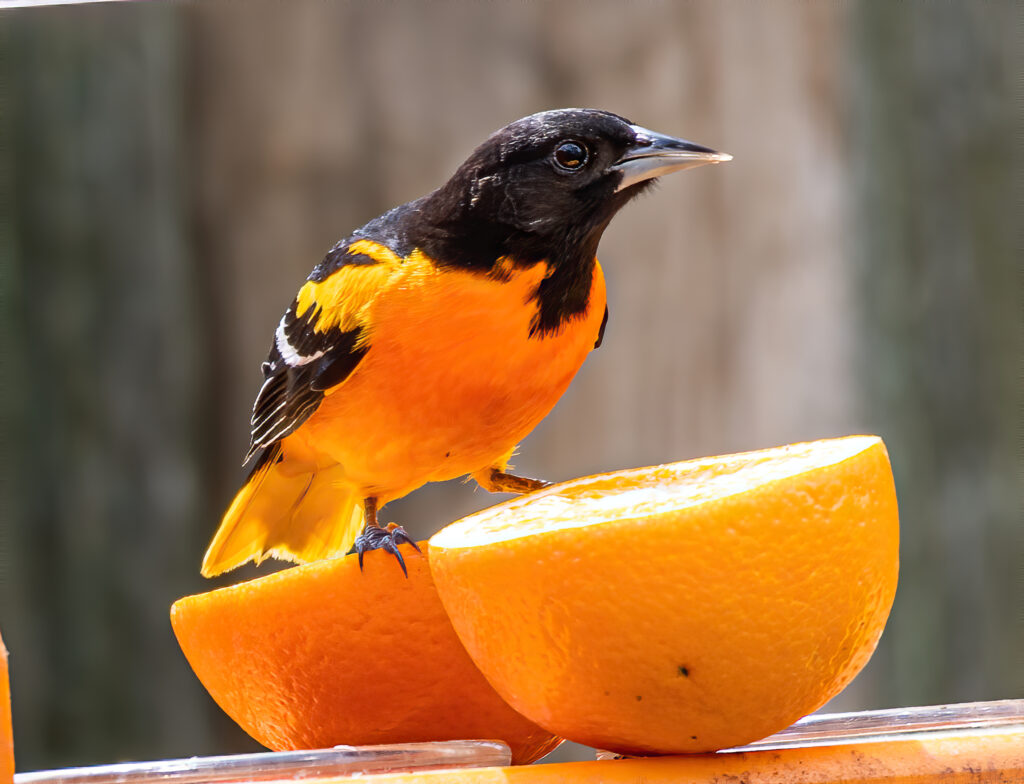
The sounds of spring are in the air! Mornings are filled with the songs and chirps of birds as they try to attract mates and evenings are full of the chorus of frogs and toads. Grosbeaks, orioles, warblers, hummingbirds, and others are making their way back into the area where they will actively search out food and nesting sites. If you are an active birder, you are probably familiar with the different locations to go to catch a glimpse of these migratory birds, but there are also ways you can entice them to come into your backyard.
Not all birds will come to feeders or nest in a house, but they all need water. Birdbaths, especially birdbaths with a moving water element like a solar fountain, may bring in birds you don’t normally see in the backyard. Birdbaths with a deep reservoir are great for large birds like robins, blue jays, and even birds of prey. If you want the most diversity out of your birdbath, add some rocks or stones that will give the water varying depths. Small birds like chickadees and goldfinches won’t normally come to a birdbath if the water is too deep. During migration season, you may even see warblers and scarlet tanagers stopping by a water feature.
Another way to attract nontraditional backyard birds to your yard this season is to put out mealworms. Mealworms are full of nutrients, protein, and fat. These are important to birds in general but even more so during the nesting season. Parents will feed their chicks a lot of insect protein once they have hatched and will continue to do so until, and even after, they leave the nest. Mealworms are available in live and freeze-dried varieties. The freeze-dried worms are easy to store in any dry, cool area but the live mealworms should be kept in the refrigerator in order to prevent their development into beetles.
Baltimore orioles are a gorgeous orange and black bird that migrate into the area in early May. They can be easily enticed to stay in your yard by feeding them their favorite foods—jelly, nectar, and orange halves. The orioles’ favorite jellies are grape and “birdberry,” which is a mix of grape and blackberry. Make sure the jelly you feed them has no artificial sweeteners or corn syrup. In addition, oriole nectar can be purchased as a concentrate or as a ready-to-use option. You can also make your own by using the recipe of one part sugar to five parts water. Make sure to boil the water before adding the sugar. Never add any dye to the nectar, as it may be harmful to the birds. Once Orioles are nesting, they start to become sparse in the yard. Around mid-June, if mealworms are added to the backyard as a food option, it will entice the orioles stop by in the summer months.
Hummingbirds are a popular bird to attract and for good reason! These tiny birds migrate all the way here from Central and South America and arrive around Mother’s Day. Hummingbirds will make a tiny nest where they usually lay two eggs. Hummingbirds are easy to attract and will eagerly visit hummingbird feeders and tubular plants. Like oriole nectar, you can purchase nectar or make your own. The recipe for hummingbird nectar is one part sugar to four parts water. You can also grow plants that produce the nectar hummingbirds love! Some native plants they’ll appreciate include: cardinal flower (Lobelia cardinalis), bee balm (Monarda didyma), wild columbine (Aquilegia canadensis), trumpet honeysuckle (Lonicera sempervirens), trumpet vine (Campsis radicans), and meadow phlox (Phlox maculata) are just a few of their favorites. On the east coast we have only one species of hummingbird, the Ruby-throated. These little birds are territorial and will actively defend food sources. The key to getting more hummingbirds in your yard is to put up multiple feeders that are out of sight of each other.
This is a wonderful time of the year when the garden is full of life—plant life and wildlife! By adding a few supplemental plants, water, or feeders to the backyard you may be surprised on what drops by.
Liz Magnanti is co-owner of the Bird House in Brighton.
Views: 0




